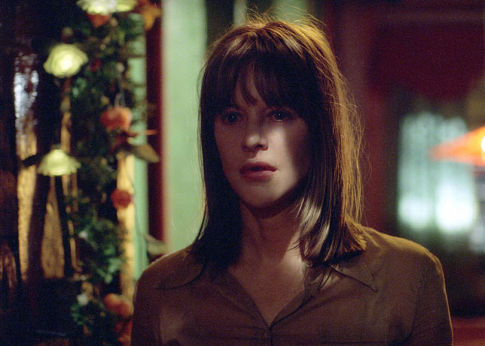Bright Star
By Andrea Thompson
Jane Campion’s “Bright Star” manages to accomplish quite a bit, not the least of which is a love story where the lovers not only rarely get any time alone together, but fall in love in front of the whole family. It can make passion difficult to find, but “Bright Star” does find it so beautifully. But I much prefer Campion’s criminally underrated 2003 film “In The Cut,” which is a far darker take on not just love, but our concept of it.
Not so with “Bright Star,” which goes all in on the passionate love story between Fanny Brawne (Abbie Cornish) and the poet John Keats (Ben Whishaw). It kicks off in 1818, during the Regency Era, which gave us one of the most prominent artists of all time in Jane Austen, was about 20 years from giving way to the more romantic, evangelical Victorian Era.
“Bright Star” is certainly reminiscent of Austen in how it keeps the sexual tension at high levels without its heroine engaging in sex. Campion brings on the undertones from the opening, with the most sexual sewing closeup I’ve ever seen, as the camera lingers longingly on the needle as it burst through the thread, with the thread seeming to have a life of its own as its follows, spilling over the fabric like sperm. Am I reading into things? Let’s just say that anyone who thinks I’m exaggerating either clearly hasn’t seen the film or wasn’t paying attention.
Unfilled longing is the cornerstone of many a love story, but in “Bright Star,” a romance that would forever remain unfulfilled, makes pining its beating heart. Even Martin Scorsese had an easier time of it when he proved in “The Age of Innocence” that he knew his way around a bodice-ripper in spite of each and every bodice remaining neatly and exquisitely in place. But his ill-fated romance took place in the heart of a New York high society fully embedded in repressed romanticism.
Bright Star
Not so with Campion’s “Bright Star,” as the romance blooms and dies with nature itself. As Fanny and Keats fall in love, Campion lavishes them with luminous sunlight as Fanny’s body is practically ravaged by the wind and curtains flowing towards her. She even welcomes butterflies into the room, much to the annoyance of her mother. When Keats must depart for London to Fanny’s deep despair, the butterflies perish in the cold that will likewise bring on the tuberculosis that will kill him.
Their love is also somewhat unconventional, even if it contains a multitude of conventions. Like many a daunted lover, Keats is poor; his success and fame came posthumously. It makes him reluctant to become attached to Fanny when he cannot afford to provide the support a husband is supposed to give, so Fanny, who has already developed an interest in him by the time “Bright Star” begins, is the one who pursues him. She makes a point to go out of her way to strike up conversations with him, and even tries to learn about the poetry that is the work of his short life, but which she feels is beyond her grasp. She’s even willing to put up with his friend, fellow poet, and in many ways, his wealthy benefactor, Charles Brown (Paul Schneider in full smarm mode).
Brown is also the far more common type of love interest, with whom Fanny shares the type of charged banter often reveals a sensitive soul underneath. But sometimes a jerk is just a jerk, and in “Bright Star” Brown is the kind of entitled, pretentious jackass who constantly demeans Fanny for her interest in fashion, and her growing connection with Keats, which he believes will ruin him and his chances. His selfishness prevents him from perceiving that love can be a source of strength, even when Fanny inspires Keats to write what would become his most beloved poems, including the sonnet the movie takes its title from.
Bright Star
Fanny pushes back at Brown’s attempts to demean her in a powerful contrast to the quietly powerful connection she shares with Keats, which is based on mutual respect, and their gradual, serene acceptance that they are unable to live without each other. In a sense, Fanny is both realized and not in “Bright Star.” She is wholly herself without proudly disdaining traditional femininity and the interests that typically accompany it, defending and embracing her passion for designing and making her own clothes. But once she becomes Keats’s muse, Campion allows the love story to overwhelm all other facets of Fanny’s life, which was rich and full.
Then there was the public perception of Fanny, which has greatly shifted over the years, and her friendship with Keats’s sister, also named Fanny, and which is completely absent. It’s not exactly surprising that Campion would want to keep us in thrall to one of the great unfulfilled loves of history, but Fanny also eventually built a life outside of it, and I wish we’d caught a sense of that. I suppose not every movie can be “Wild Nights With Emily,” but some films seem to raise your standards, which, much like a tragic love story, can be both a blessing and a curse.








